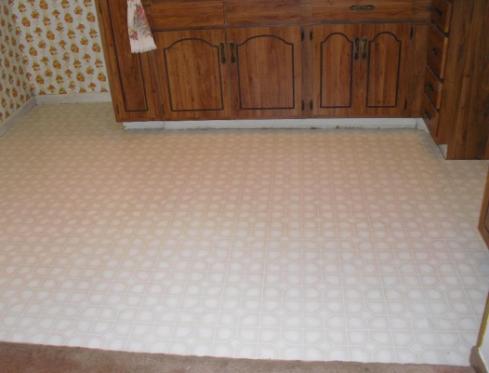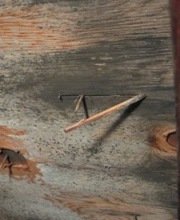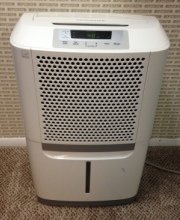Find a Mold Specialist Now
Click or Call, Toll-Free 24/7
mold under vinyl flooring

It may surprise you to learn that you can find mold under vinyl flooring – not just on the vinyl, but under it. Well, you can. You can even find mold under floorboards sometimes.
Mold often grows in hidden places. This allows it to grow unchecked for quite a while, until eventually it is discovered, and by then there is often a very large amount of mold, making it difficult and costly to eradicate.
By the time mold is discovered under flooring, the floorboards may be ruined. It's very difficult to remove mold from porous surfaces like wood, so moldy floorboards should be removed and replaced. As you might imagine, this is a big job.
If the mold is not removed, however, it may spread to other areas of the home. In time, mold can literally eat away at the structures of your home and the damage can be immense. You can learn more about how mold can damage your home.
Hidden mold also carries numerous health risks, including respiratory problems, allergic reactions, headaches and migraines. Here is more about mold-related health problems. Of course, the longer mold remains in the home, the greater your risk of associated health issues.
What Causes Mold Under Vinyl Flooring?
Mold beneath vinyl flooring may be caused by a significant water leak, like a broken pipe, or it may be caused by a smaller leak that goes on for a long time, like a leak under a sink or behind a toilet that goes unnoticed or is ignored for quite a while.
Flooding in your home may also cause mold to grown underneath flooring. You should always have your home tested for the presence of mold if it has been flooded, even if no mold is visible.
Finding Mold Under Vinyl Flooring
If you suspect there may be mold beneath your flooring, you'll need to lift up the vinyl floor covering to check. It may be necessary to look in several spots.
If you find mold under the vinyl floor covering, you should check for mold under the floorboards as well. To do this, small squares of floorboards are removed so that you can look underneath with a strong flashlight and a small long-handled mirror. Just as the vinyl flooring needs to be lifted up in several spots so you can check the entire floor, multiple small sections of floorboards need to be cut out and removed so that you can check beneath the entire floor.
The U.S. Environmental Protection Agency (EPA) suggests having a mold remediation professional assist you when looking for hidden mold. Not only is it a big job, but specific safety precautions need to be taken so you don't inadvertently spread mold around the house or expose yourself or your family members to potentially harmful mold spores. Cutting into moldy wood, for instance, stirs up hundreds of thousands of mold spores that can drift throughout the house, spreading mold everywhere. The microscopic mold spores are also easily inhaled, which can lead to serious illness. Mold remediation professionals have the necessary safety gear to protect themselves and to prevent the spread of mold during the process of checking for hidden mold growth.
Removing Mold Under Vinyl Flooring
Mold can usually be removed from vinyl and other types of non-porous floor coverings, though not from carpeting. To remove mold from non-porous floors, use a cleaning product known to kill common strains of household mold and a scrub brush. You can read more about products used to remove mold here.
If there is mold on the underside of the vinyl, where the glue is, it is much more difficult to remove the mold. The vinyl will need to be removed and replaced instead.
Removing mold from floorboards is more difficult. It is difficult or impossible to remove mold completely from wood, since tiny amounts of mold can remain in the pores of the wood. Instead, the moldy floorboards must be removed and replaced. This must be done carefully and with the appropriate safety precautions in order to avoid spreading mold or exposing yourself or your family members to potentially harmful mold spores.
For Help with Floor Mold
Whether you need help looking for hidden mold under your flooring or help with mold removal, you can schedule a free in-home consultation with an experienced mold remediation professional. A professional will visit your home, help you look for hidden mold, advise you about the work that needs to be done in order to remove the mold from your home, and answer any questions you may have. Even if you plan to handle the mold removal yourself, you can benefit from some free expert advice. Follow this link to find qualified mold removal professionals offering free in-home consultations in your town.
Return From Mold Under Vinyl Flooring To Our Causes Of Mold Page
EPA: Hidden Mold
Privacy Policy Terms and Conditions Accessibility Do Not Sell My Information Disclaimer Contact Us




